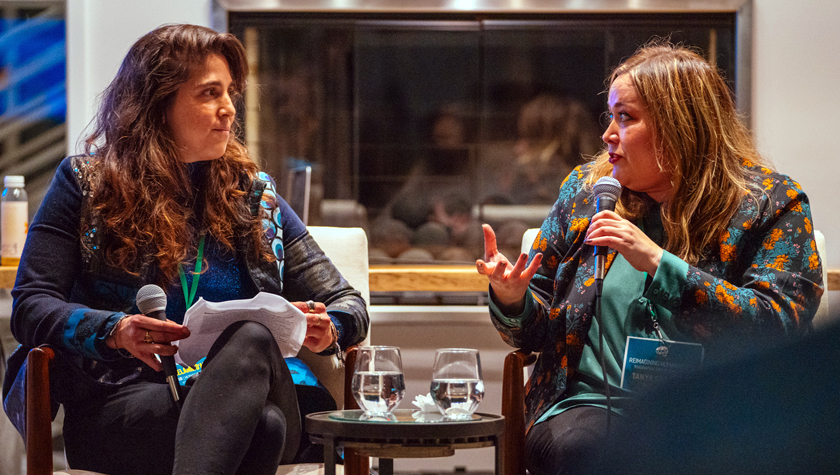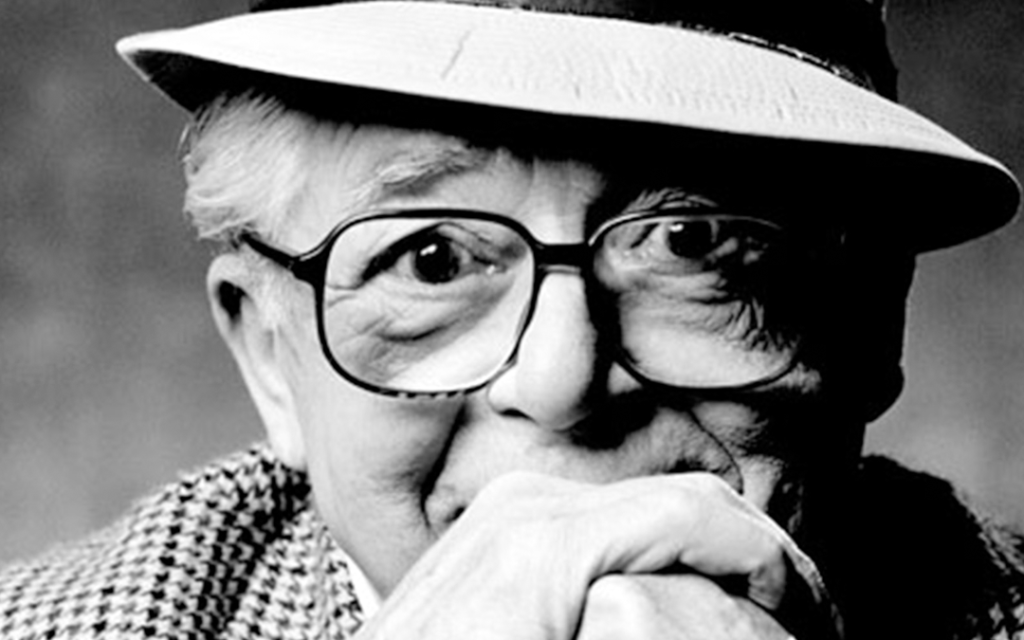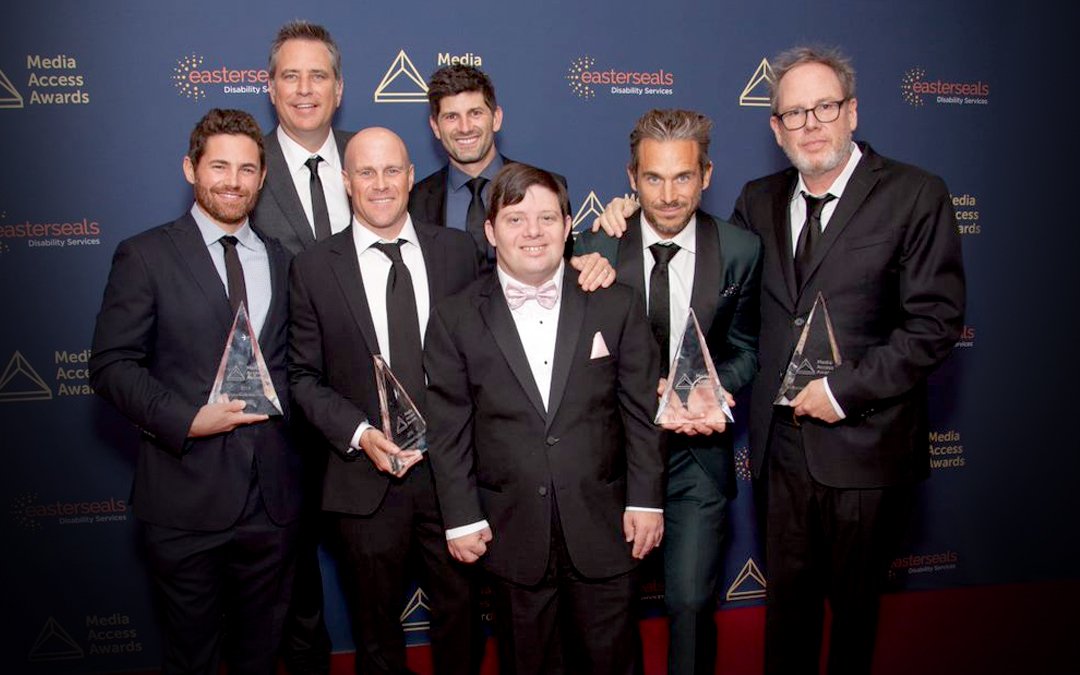Jewish American Heritage Month: History and hopes for future-Hollywood
May 20, 2022
Photos courtesy of Allison Collins-Smith
When screenwriter Tehran Von Ghasri was a child, he never saw himself represented on the big or small screen. As a Persian, Black Jewish person, Von Ghasri felt alone in his identity and, at first, alone in the world.
"It wasn't easy," Von Ghasri said. "And the reason is that you feel like you don't really belong anywhere. I'm mixed. I am Black, but people didn't see me as Black. I am Persian, but people didn't see me as Persian. I am Jewish, and they didn't see me as Jewish."
"I think it influenced me to want a career in entertainment."
Von Ghasri has worked as a stand-up comedian and screenwriter for the better part of a decade. Currently, he is making people laugh at Netflix Is a Joke and every Thursday at The Laugh Factory. He also recently sold a script for a television show and is working on another.
The majority of his content explores what it's like being a Black and Persian Jew. And his recent scripts, including the feature that sold, have main characters who identify as BIPOC and Jewish.
"I want to show the world we exist," he said.
From Jewish diaspora to the big screen
According to World Population Review, as of 2021, 15.2 million people worldwide identify as Jewish -- less than .2% of the global population. This group includes a diversity of cultures and ethnicities that evolved since the "Jewish diaspora." The Jewish diaspora is the historical dispersion of Jews throughout the world due to exile and persecution, originally from their homeland in Judea, or modern-day Israel, centuries ago.
Since, Jews have classified themselves into subgroups, depending on where their families settled. Those subgroups include Ashkenazi, or descendants of Jews who traveled north and settled in France, Germany, and Eastern Europe at the time of their exile. Currently, there are roughly 10 million people worldwide who identify as Ashkenazi Jewish. In addition, there are 4.6 million Mizrahi Jews, or Jews who settled not far from Israel, in Southwest Asia, and parts of Northern Africa. And there are approximately 900,000 Sephardi Jews around the globe, or Jews whose ancestors initially settled in Iberia (Spain and Portugal).
Most of the Jews in the United States are Ashkenazi. The reason is that between 1945 and 1952 after World War II ended, more than 80,000 Jewish Holocaust survivors immigrated to the United States under the terms of the Displaced Persons Act, many with the aid of Jewish relief organizations.
And since the beginning of the movie industry, the Jewish stories depicted on television and in movies have been mostly, if not all, Ashkenazi Jewish stories. (Think Steven Spielberg's Schindler's List, Norman Jewison's Fiddler On The Roof, or Roman Polanski's The Pianist.)
"Most of this tiny minority happens to be white presenting people," Von Ghasri said. "And that's not only confusing for me; it's also confusing at times for the public because they see Jewish people as white when that is not the entire story."
Jewish Impact on Hollywood
The movie industry began in the late 1800s, but according to Vincent Brook, a retired lecturer and scholar in American film and television, with a particular emphasis on Jewish issues, Hollywood and the movie & television industry began thriving in the early 20th century thanks to Jewish immigrants.
In the early 1900s, antisemitism worldwide was arguably at its peak. Jews faced persecution, intense antisemitism that led to restrictions on Jewish marriage, business and professional life, and even pogroms, leading to WWII and the Holocaust. (A pogrom is an organized massacre of a particular ethnic group, particularly that of Jewish people in Russia or eastern Europe.) Jews who began to flee -- specifically Europe -- mostly ended up in Mandatory Palestine (Israel) and America.
When they arrived in America, according to Brook, although they found more freedom, they weren't treated kindly, as antisemitism was raging here too. Across America, antisemites periodically seized on Jewishness to justify blame and violence. They faced quotas in education, discrimination in the professional sphere, restriction from residential and recreational communities, and continued acts of physical violence. Jews were even denied membership at universities, clubs, and other parts of American society.
According to Brook, Jews were also kept out of reputable, established, and thriving industries at the time and instead given professional scraps viewed as going nowhere -- including the movie industry. Brook said Jews took what they could get and ran with it. By 1920, all the major studios (Warner Bros., Paramount, etc.) were almost exclusively Jewish-owned -- specifically -- owned by Jewish immigrants escaping persecution.
"When these immigrants came here, they got the crumbs and they went with it, made it a big industry, and all of a sudden the movies were a big business and making a lot of money," Brook said. "So, of course, the antisemites were up in arms. They thought this was this lousy industry that the Jews could have because it was going nowhere. And suddenly, it was this huge industry. And they were pissed."
"Jews didn't create the movie industry, but they made it what it's become."
Jewish Stereotypes and Struggles
Despite Jewish influence in Hollywood, since movies and television began, the depictions of Jews on screen have often been full of false and offensive Jewish stereotypes. Some of those stereotypes include Jewish obsession with money, Jews as outsiders, the overbearing Jewish mother, the cheap Jew, and the Jewish American princess.
Jewish stereotypes in media can be blatant or subtle and are even found in tentpole productions, including the infamous Harry Potter series. The goblins in Harry Potter, for instance, are a group of tiny, untrustworthy bankers with long noses who control the wizarding economy.
So how is it possible that stereotypes of Jewish people exist in the media when Jewish people have had an influence?
"That's easy, antisemitism," Brook said. "When Jews came here, they changed their names; they often changed their looks. And they did not want to rub their Jewishness into the audience's face on the screen."
"Even in Jewish movies and shows, you often have Jews assimilating, kind of losing their Jewishness -- that has become a major theme."
It wasn't until the late 1960s, Brook said, that a "Jewish new-wave" began, where Jewishness started to become more accepted in film, specifically because actors like Barbara Streisand began embracing their Jewishness versus hiding it. After that, Brook said it took longer for television to catch up, but in the late 80s and early '90s, shows like NBC's Seinfeld and people like Jerry Seinfeld and Larry David began to change the game for Jews in the medium.
Although Jewish stories and Jewish people started to become more accepted in Hollywood, most of the stories portrayed were of the Ashkenazi Jewish experience, leaving Jewish people like Von Ghasri and fellow writer Stephen Nolly, a Japanese-American Jew, feeling unseen.
"Jewish culture is so incredibly rich and complex," Nolly said. "There are African Jews, Chinese Jews; our culture is not a monolith."
"And when you talk about it, the Jewish community has so many different expressions, but the one that's most common, and the one that most non-Jews are familiar with, is this Ashkenazi white Jewish experience...specifically this Ashkenazi, Jewish New York experience and they aren't even aware of these other varietals."
Jewish Hollywood Bureau
While there has been some positive Jewish representation on-screen despite old stereotypes that continue to rear their heads, the orthodox Jewish community has objectively experienced the most negative portrayals in film and television. From Netflix's Unorthodox, and My Unorthodox Life, to The Awakening of Motti Wolkenbruch, the orthodox Jewish community is constantly portrayed as extremist, overbearing, and the main characters in these shows are shown as "escaping" their realities.
Because of this, in 2007, Allison Josephs created "Jew In The City," a nonprofit to confront the negative feelings that some people have towards orthodox Jews. Josephs said she launched the nonprofit with the goal of using social media to tell the stories and perspectives of orthodox Jews and Judaism that are rarely depicted in traditional media.
Since it began, her organization has grown tremendously, and in March of this year, Josephs launched an official Hollywood bureau to combat Jewish stereotypes in the media. Josephs said the bureau began with conversations with other bureaus fighting for better representation for their communities and discussions with the diversity, equity, and inclusion leadership at NBC, CBS, and Disney.
And already, Josephs said, NBC and CBS have asked her and her team to train their executives and serve as consultants.
Josephs said the Jewish Hollywood bureau would conduct minority impact studies, provide training and consulting, speak on panels at media conferences, host media awards, and build writers labs.
"We also intend to do policy work, as many other bureaus do," Josephs said. "It's 2022, and in the realm of sports, entertainment, and media, despite accommodations being made in historic ways for marginalized groups in these industries, Jews who observe Shabbat and holidays don't count."
While at first Josephs intended the Hollywood bureau to focus on orthodox Jewish depictions, she's since branched out to work to improve all Jewish representation.
"Although there are Jews in the writer's rooms, the ones who were reaching out to us are not happy with how they're being depicted. They're sick of the caricatures and perpetuated antisemitic tropes on the screen by Jews and non-Jews. In addition, they've noticed an absence of Jews of color," Josephs said.
"They asked us to broaden our mission, and we realized that the Muslim bureau doesn't differentiate between secular and religious Muslims. At only 15 million people worldwide, we realized we can't do that for Jews either."
According to the Anti-Defamation League, in 2021, antisemitism in the United States reached an all-time high, with more than 2,700 incidents recorded last year. Much of the violent and physical antisemitism is directed towards orthodox Jews since they are easily identifiable. Josephs believes much of this has to do with how orthodox Jews are portrayed in the media. With the new bureau, she hopes she can influence Hollywood to create more well-rounded, whole, and human orthodox and non-orthodox Jewish characters to develop more acceptance of the Jewish community.
"[What] we want to see are Jews who comfortably and proudly rest in their Jewishness. We want to see Jewish traditions depicted with authenticity and positivity so that Jewish viewers can watch with pride and non-Jewish viewers can be exposed to the beauty of our heritage. We want to see a diverse set of Jewish backgrounds - both religious and ethnic," Josephs said.
"We're looking for proud Jews to be able to tell their stories. Jews who don't feel they need to be in hiding. Jews who don't feel that they need to apologize or erase their Jewishness to meet the expectations of the rest of the world."
Hollywood Victories And Future of Jewish Representation
Brook, who has been studying Jews in the media for decades, said Jews have had some victory in Hollywood regarding on-screen representation, especially since Jews went from hiding to very often celebrating their Jewishness. But there is still much work to be done, especially when it comes to highlighting the beauty and diversity within the Jewish community.
Von Ghasri hopes through his work that the public becomes more familiar with what it truly means to be Jewish -- and specifically learns more BIPOC Jewish stories.
"There are basically no victories for Jews of color in the media," Von Ghasri said. "Thankfully, there are some that are on the way. And that's what I'm so excited about. I am excited for this new generation, who is speaking up and speaking out and showing the diversity in the world and inclusiveness, even in the Jewish population."
"I hope that one day, I will have children, and then you will have children, and these children will be Jews of color, and they will be able to turn on the TV, and they will be able to say, "Mommy, daddy, that person looks like me!"
Written by: Allison Norlian
Allison Norlian is a three-time, Emmy-nominated journalist who has worked as a television reporter and anchor in markets around the country. She has covered a variety of stories from the riots in Charlottesville, Virginia to President Trump’s travel ban in the fourth circuit court of appeals. Allison has also won AP awards for her work and a Catalyst For Change award from the Arc of Virginia for her reporting on the disabled community. Allison just moved to Los Angeles with her screen writer husband and two cats and is excited for all LA has to offer!



